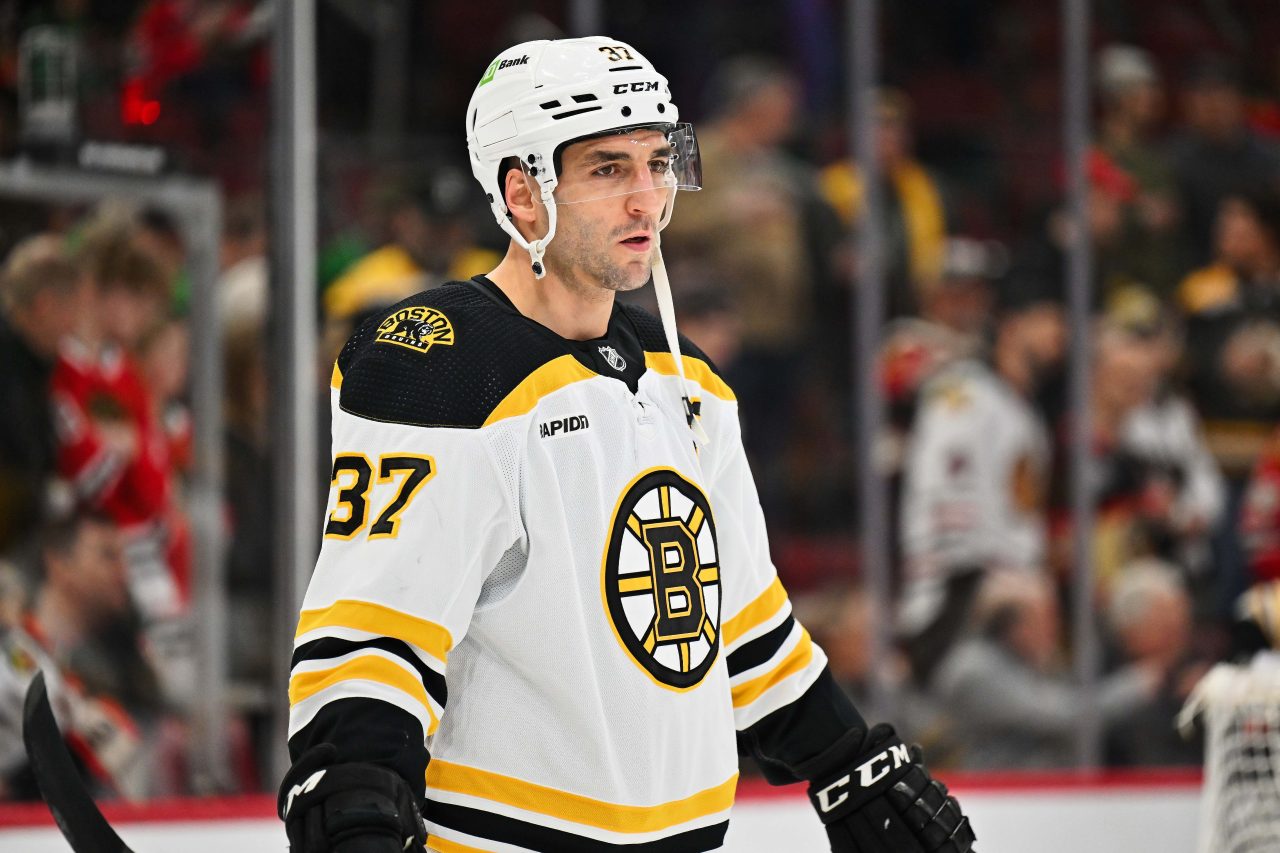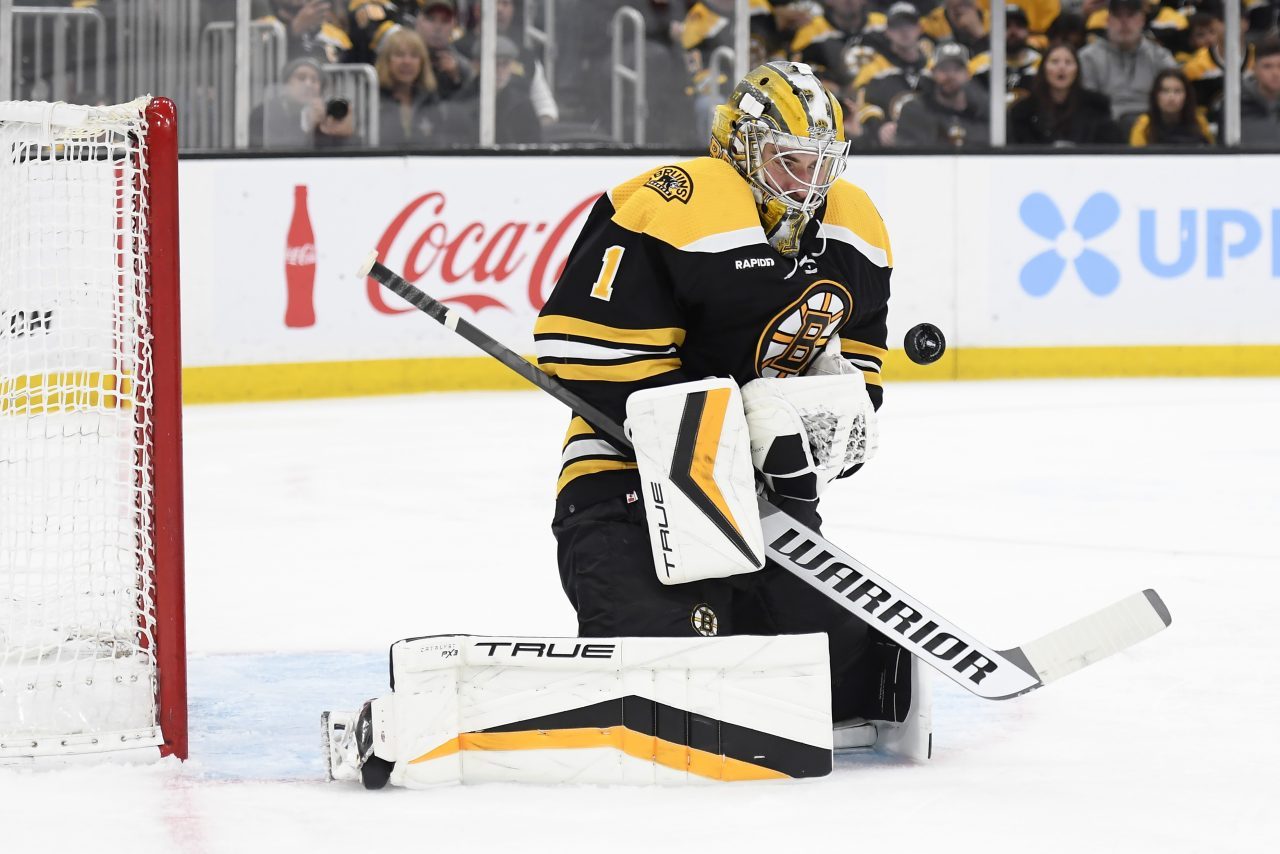The Boston Bruins will be allocating significant salary cap resources to their goaltenders during the upcoming NHL season. While this is often a bad idea for teams, it's not in this case for the B's, at least in the short term.
The Bruins have lost some significant pieces this offseason.
WATCH ANYTIME FOR FREE
>Stream NBC10 Boston news for free, 24/7, wherever you are. |
No. 1 center and captain Patrice Bergeron retired. No. 2 center David Krejci might retire. Veteran forwards Taylor Hall, Tyler Bertuzzi, Tomas Nosek and Garnet Hathaway all departed in free agency or via trade. Top-four defenseman Dmitry Orlov and third-pairing d-man Connor Clifton left as free agents, too.
That's a lot of talent out the door in just a few months.
Get updates on what's happening in Boston to your inbox. Sign up for our >News Headlines newsletter.
Based on the Bruins' veteran free agent signings, plus management/ownership comments since May, it looks like this franchise has every intention of being in the Eastern Conference playoff mix in 2023-24, but of course not to the dominant level we saw last regular season. The Bruins haven't done rebuilds, only minor re-tools, since the salary cap went into place for the 2005-06 season.
What is Boston's best path to contention next season? Strong goaltending.
More Bruins coverage
This is why being among the league leaders in goalie spending isn't a big deal for Boston in 2023-24. If this team is going to make the playoffs, the goaltending likely will have to carry it there. The Bruins aren't going to rank No. 2 in overall goals and 5-on-5 goals scored next season. They've lost too much offensive firepower during the offseason. They could still be inside the top 12 or 15, but scoring at a blistering pace would be a surprise. The expected decrease in scoring makes the importance of stellar defense and goaltending even more critical.
The Bruins will be paying $8.475 million against the salary cap for Linus Ullmark and Jeremy Swayman next season. Ullmark, who is the reigning Vezina Trophy winner after leading the league in wins, save percentage and GAA, has a $5 million cap hit. Swayman, who ranked No. 4 in both GAA and save percentage last season, was just awarded a contract in arbitration that carries a $3.475 million cap hit.
The B's, per Spotrac, currently rank seventh in goalie spending in terms of total salary cap dollars spent. This ranking is a little deceiving, though, because it doesn't account for teams with goalies who will likely see LTIR time (Carey Price and Montreal, for example). Spotrac's ranking also includes three goalies for a lot of teams. But either way you slice it, the Bruins will be in the top 10 of salary cap spending on goalies next season after being in the middle third of the league each of the past two seasons.
The most recent memory Bruins fans have of the Ullmark/Swayman duo is its lackluster performance in a stunning first-round playoff exit to the Florida Panthers in April. In the regular season, though, this tandem was the league's best by far and put up some truly historic numbers. The Bruins ranked No. 1 in goals allowed (36 fewer than the No. 2 team), No. 1 in save percentage and No. 1 in high-danger save percentage. Even if Ullmark's play regresses a bit as expected, he and Swayman should still be a top three or top five duo next season. That level of goaltending alone should be enough to lead the B's back to the playoffs.
Here's a look at Ullmark and Swayman's contracts. Their combined cap hits account for 10.1 percent of the $83.5 million salary cap for the 2023-24 season.
While it makes sense to carry two goalies with salary cap hits above the league average of $3.1 million for 2023-24, it's much harder to make a case for this strategy long term.
If Swayman continues on his current trajectory and becomes a consistent top 10 goalie, then it would make sense to trade Ullmark and free up $5 million of cap space that can be used to fortify another position. The Bruins badly need a top-six center to replace Bergeron (and maybe Krejci, too), and those players are typically very expensive.
A stellar 2023-24 campaign by Swayman could vault him into the $5-plus million dollar range for the foreseeable future. Paying two goalies $5 million apiece is a lot, especially when other areas on the roster need upgrading. The Bruins are already projected to have around $30 million in cap space next summer, per CapFriendly. If they trade Ullmark after the upcoming season, that number could reach $35 million or more. That would give general manager Don Sweeney ample cap flexibility to make huge roster upgrades and re-sign players like Jake DeBrusk and Swayman. Trading Ullmark should also be easier next offseason when the cap is higher and he has only one more year left on his deal.
A goalie depth chart in 2024-25 (and beyond) of Swayman and current Providence Bruins starting netminder Brandon Bussi would be a solid and inexpensive tandem between the pipes. Of course, this scenario assumes Bussi proves himself ready for an NHL backup role after the 2023-24 season. A quality backup on a cheap entry-level contract would be huge for Boston from a salary cap/roster building perspective.
The Bruins spending a lot of money on goalies this coming season is not a hindrance given their need for strong goaltending in order to compete in an Eastern Conference loaded with strong teams. That said, allocating 10 percent or more of the salary cap at this position doesn't really make sense over the long term, especially when you look at the Bruins' lack of high-end talent at center. And outside of a 34-year-old Brad Marchand, the B's don't have much high-end skill at left wing, either.
The Bruins don't need to make any major goalie changes this year. The more difficult decisions likely will come next offseason, when the team must figure out another new contract for Swayman and determine whether Ullmark fits the long-term plan.




